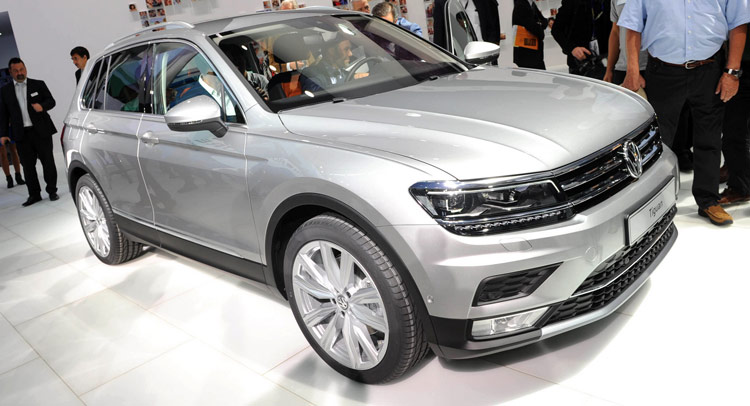VW is ticking plenty of boxes with its second stab at a compact SUV, the new Tiguan that celebrated its world premiere today at the Frankfurt Motor Show.
It’s a step up from the now six-year old first-gen Tiguan in more ways than one, starting with a more handsome design that, while not groundbreaking, may prove to withstand the test of time, and moving onto more objective matters that can be quantified, such as a bigger footprint and a 50kg or 100 pound weight loss over its predecessor.
Now riding on the VW Group’s ever-present flexible MQB architecture also used by the latest Golf compact, the Tiguan has grown 60mm (2.4 inches) in length and 30mm (1.2 inches) in width, while gaining a 77mm (3.0 inches) stretch to the wheelbase at 2,681mm (105.6 inches). However, it does, lose 33mm (1.3 inches) in height.
Confirming earlier reports, VW said that it will introduce a longer wheelbase version of the Tiguan for other markets, namely the USA and China, but it’s not clear yet if North America will get both models or only the stretched version that could be offered in both 5- and 7-seater variants and will be built in Mexico.
For now, we know that Europe will get the regular wheelbase Tiguan with an array of engines, including four petrol TSI units delivering between 125PS (123hp) to 220PS (217hp), and the same number of diesels with up to 240PS (237hp), in both front- and all-wheel drive editions.
VW also gave us a preview of an upcoming, plug-in hybrid version of the new Tiguan named the GTE Study in Frankfurt. It borrows the European Passat GTE’s powertrain consisting of a 156PS (154hp) 1.4-liter TSI turbocharged four-cylinder petrol engine, an 85kW (115PS or 113hp) electric motor and a lithium-ion battery for a combined output of 218PS (215hp). It returns a pure electric range of 50 kilometers (31 miles) and a combined fuel consumption of 1.9 l/100 km (123.8 mpg US), equating to CO2 emissions of 42 g/km.





































































